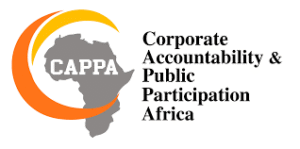
BY ADENEKAN VICTORIA FAITH
Africa experienced one of its hottest years on record in 2024, accompanied by severe flooding, droughts, and marine heatwaves.
This verdict was contained in the World Meteorological Organization’s (WMO) State of Climate in Africa 2024 report released on May 12, 2025.
The report paints a grim picture for the continent, with climate impacts threatening food and economic security across the region.
The extreme weather events in 2024 were partly driven by the El Niño phenomenon, alongside long-term global warming and climate change.
Africa’s average annual temperature in 2024 was approximately 0.86°C above the average between 1991 and 2020, with North Africa experiencing the highest increase, at 1.28°C above the historical average. North Africa is now the fastest-warming region on the continent.
These extreme temperatures have had a devastating impact on agriculture and livelihoods. In March, Sudan and Somalia were hit by a record heatwave, with temperatures surpassing 45°C.
The extreme heat led to the closure of schools and disrupted food production and distribution. Similarly, the Sahel region also faced extreme heat, and in July, a heat dome phenomenon caused record-breaking temperatures in North Africa.
Marine heatwaves (MHWs) were another major issue. Ocean temperatures around Africa, particularly in the Atlantic and Mediterranean seas, reached alarming levels. In the first four months of 2024, marine heatwaves affected 30 million square kilometers of ocean, setting a new record.
These heatwaves harm marine life and increase the intensity of tropical cyclones, which have a significant impact on countries like Malawi, Mozambique, and Madagascar.
The continent also faced erratic rainfall patterns. In the Sahel, excessive rainfall caused severe flooding, while in the Sahara Desert, a region known for its dryness, floods occurred after receiving more than five times the usual amount of rain in August.
Eastern Africa, including Kenya, Tanzania, and Burundi, also suffered from heavy rains between March and May, which affected around 700,000 people and caused hundreds of deaths.
However, these same regions experienced below-average rainfall later in the year, leading to concerns over food security.
In contrast, Southern and Northern Africa grappled with extensive droughts. Morocco, already in the midst of a prolonged drought, saw its agricultural output fall 42% below the five-year average.
Countries in Southern Africa, including Malawi, Zimbabwe, and Zambia, also faced their worst droughts in two decades, resulting in reduced cereal yields and food shortages.
In response to these challenges, African countries have improved their meteorological services to better prepare for and respond to extreme weather.
The Nigerian Meteorological Agency has adopted digital platforms to deliver agricultural advice, while Kenya’s Meteorological Department uses mobile apps and SMS to update farmers.
South Africa has incorporated AI-based forecasting tools for more accurate weather predictions.
Celeste Saulo, WMO Secretary-General, emphasized the importance of addressing Africa’s climate challenges, stating, “We are seeing a stark pattern of extreme weather events across the continent, with some regions facing devastating floods while others suffer from prolonged droughts.”
She stressed the WMO’s commitment to supporting efforts to build resilience and adaptation in Africa, including through initiatives like Early Warnings for All.
As climate impacts intensify, the report calls for urgent action to address the continent’s vulnerabilities and strengthen its capacity to adapt to future climate shocks.







